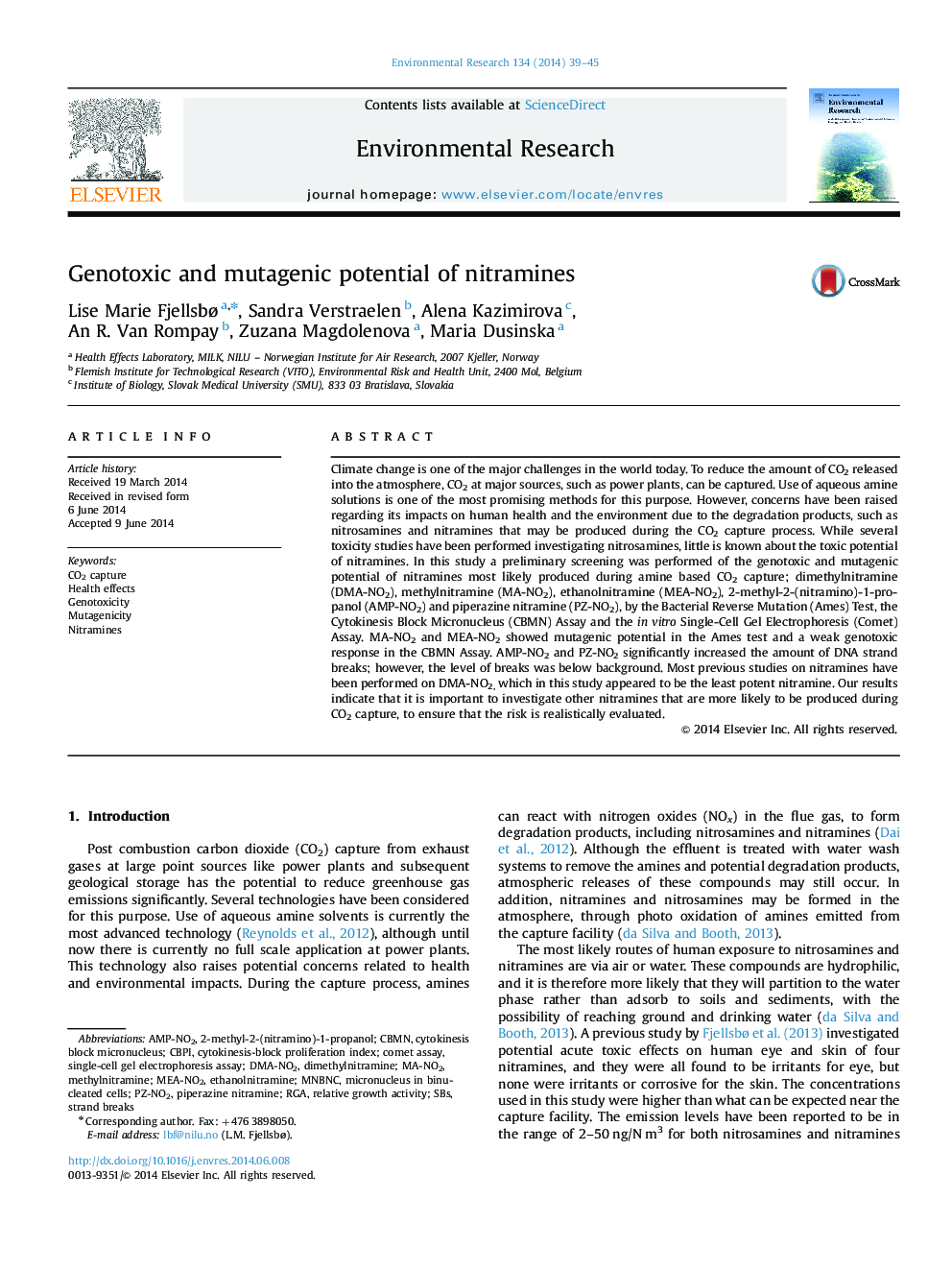| کد مقاله | کد نشریه | سال انتشار | مقاله انگلیسی | نسخه تمام متن |
|---|---|---|---|---|
| 6352561 | 1622567 | 2014 | 7 صفحه PDF | دانلود رایگان |
عنوان انگلیسی مقاله ISI
Genotoxic and mutagenic potential of nitramines
دانلود مقاله + سفارش ترجمه
دانلود مقاله ISI انگلیسی
رایگان برای ایرانیان
کلمات کلیدی
SBSCBMNCBPISingle-cell gel electrophoresis assay - آزمایش الکتروفورز ژل تک سلولیHealth effects - اثرات بهداشتیCO2 capture - جذبCO2Mutagenicity - جهش زاییRga - راگاComet assay - روش کامت یا روش سنجش ستاره دنبالهدار Genotoxicity - سمیت ژنتیکیCytokinesis-block proliferation index - شاخص تکثیر بلوک سیتوکینزیسStrand breaks - شکستن رشتهNitramines - نیترامین
موضوعات مرتبط
علوم زیستی و بیوفناوری
علوم محیط زیست
بهداشت، سم شناسی و جهش زایی
پیش نمایش صفحه اول مقاله

چکیده انگلیسی
Climate change is one of the major challenges in the world today. To reduce the amount of CO2 released into the atmosphere, CO2 at major sources, such as power plants, can be captured. Use of aqueous amine solutions is one of the most promising methods for this purpose. However, concerns have been raised regarding its impacts on human health and the environment due to the degradation products, such as nitrosamines and nitramines that may be produced during the CO2 capture process. While several toxicity studies have been performed investigating nitrosamines, little is known about the toxic potential of nitramines. In this study a preliminary screening was performed of the genotoxic and mutagenic potential of nitramines most likely produced during amine based CO2 capture; dimethylnitramine (DMA-NO2), methylnitramine (MA-NO2), ethanolnitramine (MEA-NO2), 2-methyl-2-(nitramino)-1-propanol (AMP-NO2) and piperazine nitramine (PZ-NO2), by the Bacterial Reverse Mutation (Ames) Test, the Cytokinesis Block Micronucleus (CBMN) Assay and the in vitro Single-Cell Gel Electrophoresis (Comet) Assay. MA-NO2 and MEA-NO2 showed mutagenic potential in the Ames test and a weak genotoxic response in the CBMN Assay. AMP-NO2 and PZ-NO2 significantly increased the amount of DNA strand breaks; however, the level of breaks was below background. Most previous studies on nitramines have been performed on DMA-NO2, which in this study appeared to be the least potent nitramine. Our results indicate that it is important to investigate other nitramines that are more likely to be produced during CO2 capture, to ensure that the risk is realistically evaluated.
ناشر
Database: Elsevier - ScienceDirect (ساینس دایرکت)
Journal: Environmental Research - Volume 134, October 2014, Pages 39-45
Journal: Environmental Research - Volume 134, October 2014, Pages 39-45
نویسندگان
Lise Marie Fjellsbø, Sandra Verstraelen, Alena Kazimirova, An R. Van Rompay, Zuzana Magdolenova, Maria Dusinska,